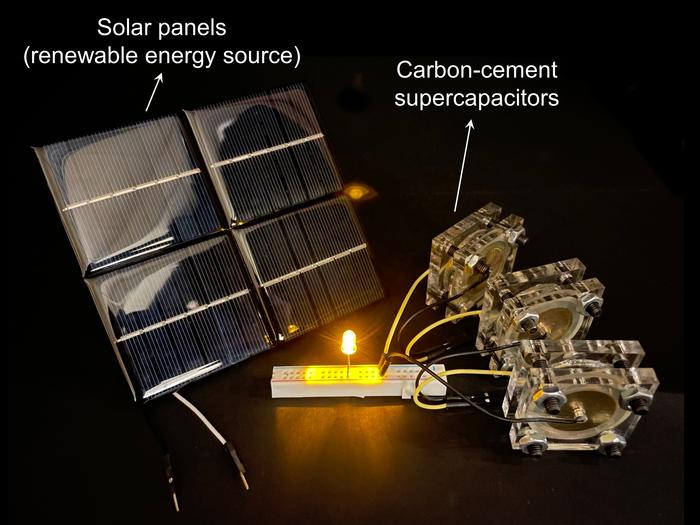#storage
Grenergy to expand solar and storage with US$2.6 billion through 2026
Of its three major operational markets – the US, Europe and Latin America – Grenergy particularly highlighted Chile as a fulcrum for leveraging up its solar and storage businesses.
https://www.pv-tech.org/grenergy-to-expand-solar-and-storage-with-us2-6-billion-through-2026/
#grenergy, #energy, #finance, #chile, #america, #latin, #news, #pv, #storage
✅ #Windows10 in #KVM gezwängt
✅ #Steuererklärung fertig - nettes Ergebnis
✅ erster eigener #S3 #Storage mit #minio und #podman aufgebaut
✅ erste sehr vielversprechende Tests mit #restic absolviert
✅ Erkältung eingefangen
Und ihr so?
Project #Silica’s coaster-size #glass plates can store #data for thousands of years, creating sustainable #storage for the world.
source: https://unlocked.microsoft.com/sealed-in-glass
A small sheet of glass can now hold several terabytes of data, enough to store approximately 1.75 million songs or 13 years’ worth of music.
Giant Tesla Megapack project turns on to stabilize the grid
https://electrek.co/2023/10/10/giant-tesla-megapack-project-turns-on-to-stabilize-the-grid/
Peak Energy
Veterans from Tesla, Northvolt hatch plan to mass-produce huge batteries to store solar and wind energy
US grid-scale energy storage installations soared in Q2 2023
https://electrek.co/2023/09/24/us-grid-scale-energy-storage-installations-soared-in-q2-2023/

#library #book #storage #education
Marriott Library. U of U. Salt Lake City
Where have all the books gone? Gone to ARC, most every one.
ARC
Automatic Retrieval Center
https://lib.utah.edu/services/automated-retrieval-center.php
Storage question.
The 4TB disks in my ancient Synology NAS are getting old and close to the moment where I am considering replacing them. As I said: ancient Synology. It's well over 10 years old.
Would it an option to replace this NAS with a Nextbox? (https://shop.nitrokey.com/shop/product/nextbox-116)
I'm looking at a 4GB Ram/5TB HDD version. The only drawback I see is there are no mirrored disks, as the Synology has.
#Nextcloud #Synology #NAS #Storage
Organic solid flow battery
https://www.pv-magazine.com/2023/09/06/us-utility-testing-5-mw-10-hour-organic-solid-flow-battery/
OneDrive is the latest cloud provider to kill unlimited storage
https://www.androidpolice.com/microsoft-onedrive-killing-unlimited-storage/
Cement-based supercapacitor makes a novel energy storage system
https://physicsworld.com/a/cement-based-supercapacitor-makes-a-novel-energy-storage-system/
In a groundbreaking development, researchers have announced a revolutionary breakthrough in #renewable #energy #storage that could reshape the future of sustainable power sources. The #innovation, dubbed "EcoCell," promises to overcome the longstanding challenges of storing renewable energy efficiently and affordably.
#EcoCell employs an advanced nanomaterial matrix, engineered to optimize energy absorption and retention. This matrix enables unprecedented energy density, allowing for significantly longer storage durations without significant loss. Furthermore, the design incorporates a self-regulating thermal management system, ensuring stable operation even under extreme temperature conditions.
Dr. Emily Rodriguez, lead scientist on the project, expressed her excitement: "EcoCell represents a leap forward in energy storage #technology. With its ability to store vast amounts of renewable energy, we could eliminate the intermittent nature of sources like solar and wind power. This could have a profound impact on global energy distribution, reducing our reliance on fossil fuels."
The implications of this discovery are far-reaching. By addressing energy storage limitations, EcoCell could accelerate the adoption of renewable energy on a global scale, significantly reducing carbon #emissions. While practical applications are still in the testing phase, #industry experts are optimistic that this breakthrough will reshape the landscape of sustainable energy production, bringing us closer to a greener and more sustainable future.
-ChatGPT
The US energy storage industry has been riding the coattails of wind and solar power, and things are about to get interesting. Pumped hydropower continues to dominate the storage field by a wide margin, but lithium-ion batteries are making inroads and new technologies are also creeping in. Oddly enough, Texas is front and center in the new activity despite persistent attempts by Republican office holders in the state to tilt the scales in favor of fossil energy.
#bash #Help > Delete a Folder in all #BTRFS snapshots.
So my server ran full, and it has years of snapshots, i actually do not want to delete, however i spotted (with the amazing ndcu) some 500GB of Backups i do not need. So i want to delete them.
apparently to do this you need to set each snapshot to writable and delete the file/folder you want. (see https://www.suse.com/support/kb/doc/?id=000019594)
they have also a script there doing this in a handle able manner. however it is only for Files and not for Folders. But i need to delete Folders. Ideally i want to be ably to provide the path to it so i do not delete some identically named folders elsewhere.
I tried to adapt the script but i do not quiet understand it.
original script
```
file=$1
while read a
do snapshot=$(echo ${a%%/$file})
btrfs property set $snapshot ro false
rm -f $a
btrfs property set $snapshot ro true
done < <(find /.snapshots/ -name $file)
**question 1:**
what does this line exactly do?
do snapshot=$(echo ${a%%/$file})
```
question 2
in what way/order does this "< <" syle of conding feed the paths to the loop?
because this (my for folders adapted test script)
file=$1
while read a
do snapshot=$(echo ${a%%/$file})
echo "$snapshot snpsho"
# btrfs property set $snapshot ro false
#rm -rf $a ## delete command adapted for folders
echo "foundet $a"
#btrfs property set $snapshot ro true
done < <(find /home/ -type d -path $file) ## find command adapted for folders and paths
this does not give me any output, altough the find command on its own totally does
rant
also why, do we still not have tools that do make sense with btrfs filesystems. like:
- gui option in filemanager to delete a file/folder though all spanshots
- gui option in filemanager to easily compare/resore older versions of a file. (like windows)
this should be quiet easy and would be heavily helpfull...















